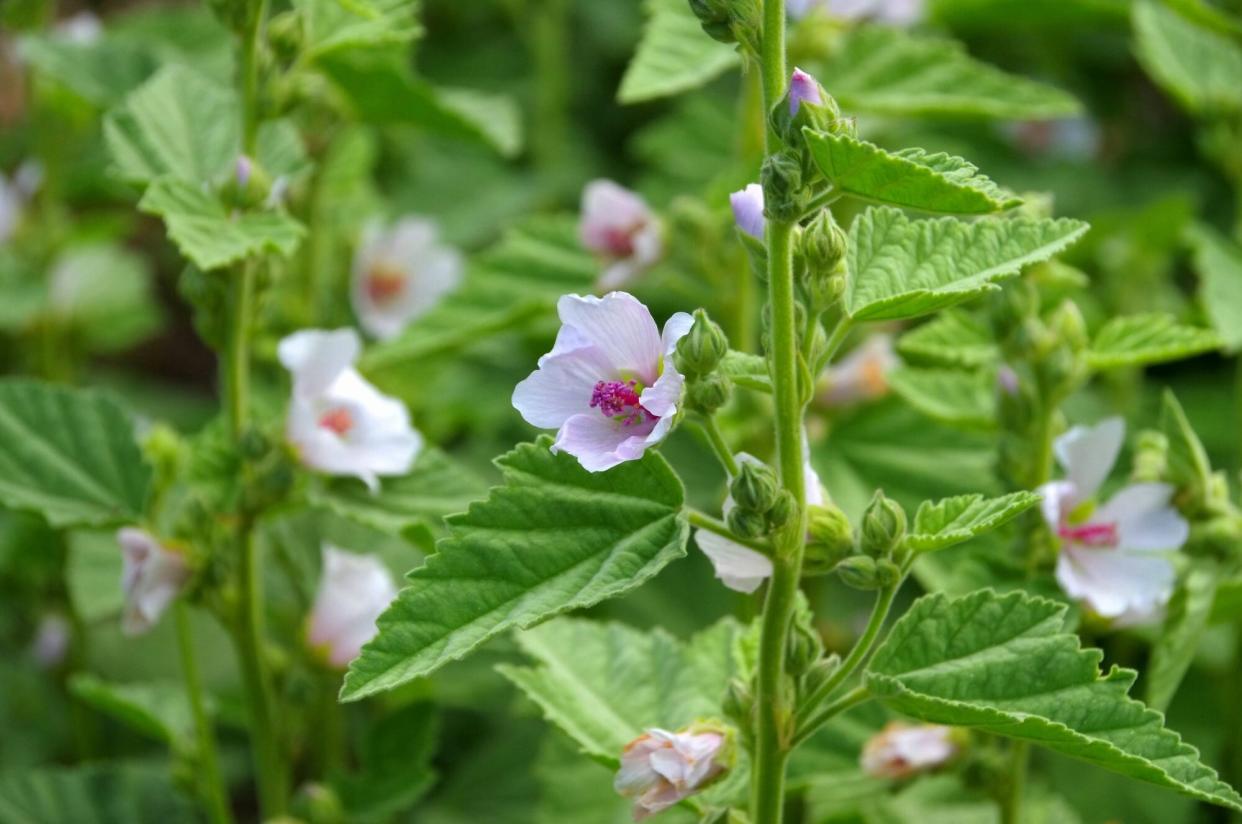Did You Know? The Marshmallow Plant Gave the Confection Its Name

LianeM/Getty Images
Ever wonder where marshmallows get their name? It turns out they're indebted to a flower that grows in—where else?—the marshes. Althaea officinalis, known by its common name marshmallow (or marsh mallow), is a flowering plant in the mallow family that grows in wet, marshy environments, and it gives its name to the squishy, sweet white cylinders that make our s'mores so tasty.
The plant is native to Europe and Africa, and throughout history, parts of the plant including the root and sap were enlisted for culinary and medicinal uses. While the marshmallow confections we enjoy today are made up mainly of sugar, water, and gelatin, that wasn't always the case. They once contained sap from the marshmallow plant and were used to treat ailments.
According to the National Confectioners Association, the earliest form of the candy as we recognize it developed in France: "The French were introduced to marshmallow in the early to mid-1800s. Owners of small candy stores whipped sap from the mallow root into a fluffy candy mold."
That version of the marshmallow included mallow root sap, egg whites, and sugar, and it involved a time-consuming process that prompted new developments to the recipe. Tweaks to the method and ingredients followed, including using cornstarch to create molds and adding gelatin. Eventually, the National Confectioners Association explains, "candy makers replaced the mallow root with gelatin and this created the marshmallow's stable form."
While the marshmallows we buy in bags at the store today no longer contain any traces of the marshmallow plant, they do still take their name from the marsh flower. Think about that the next time you take a bite of a MoonPie, top your sweet potato casserole, or roast a marshmallow over a bonfire and sandwich it between two graham crackers.
WATCH: Deep-Fried MoonPies
What's your favorite plant story? Do you have any surprising plant facts up your sleeve?

